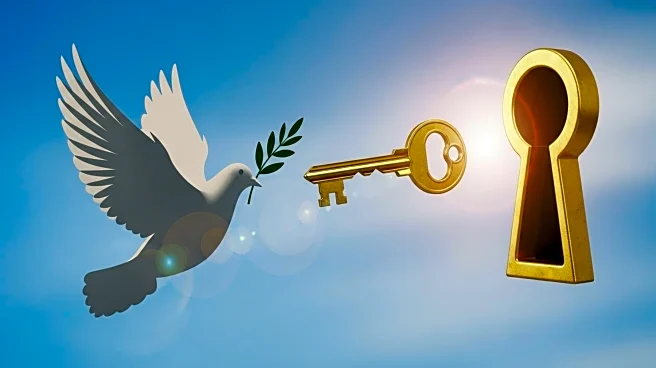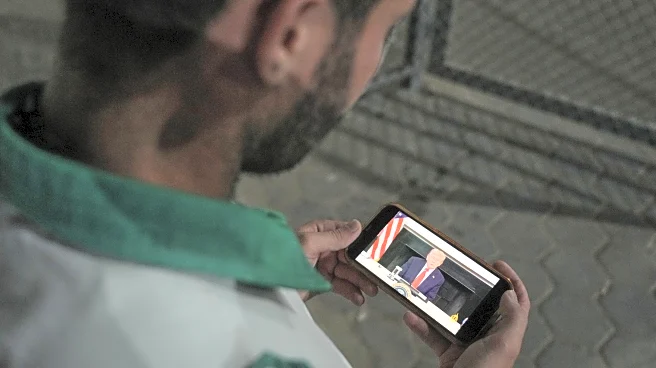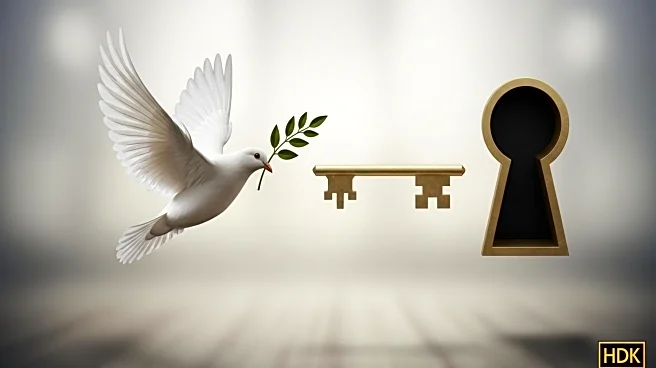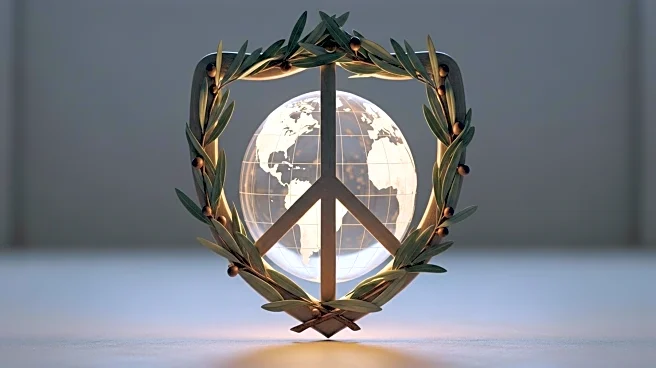What's Happening?
President Trump has announced a cease-fire plan between Israel and Hamas, marking a significant step towards peace in the region. The agreement includes the release of hostages who have been held in Gaza since their capture on October 7, 2023. This development comes after intense negotiations and international pressure to resolve the ongoing conflict. The announcement was met with celebrations in Tel Aviv, Israel, as citizens reacted positively to the news. The cease-fire plan is expected to be implemented in phases, with the initial focus on the release of hostages.
Why It's Important?
The cease-fire plan is a crucial development in the Middle East, potentially easing tensions between Israel and Hamas. The release of hostages is a significant humanitarian achievement, addressing one of the most pressing issues in the conflict. This agreement could pave the way for further diplomatic efforts and negotiations, potentially leading to a more stable and peaceful region. The involvement of President Trump highlights the U.S.'s role in international diplomacy and its influence in brokering peace deals. The success of this plan could enhance the U.S.'s reputation as a mediator in global conflicts.
What's Next?
The next steps involve the implementation of the cease-fire plan, starting with the release of hostages. This process will require coordination between Israel, Hamas, and international observers to ensure compliance and safety. Further negotiations may be necessary to address other aspects of the conflict, such as territorial disputes and security concerns. The international community will likely monitor the situation closely, with potential reactions from other Middle Eastern countries and global powers. The success of this plan could lead to more comprehensive peace talks in the future.
Beyond the Headlines
The cease-fire plan raises ethical and legal questions regarding the treatment of hostages and the responsibilities of conflicting parties in ensuring their safety. It also highlights the cultural dimensions of the conflict, as both sides navigate historical grievances and seek reconciliation. Long-term shifts could include changes in regional alliances and the role of international organizations in conflict resolution.












